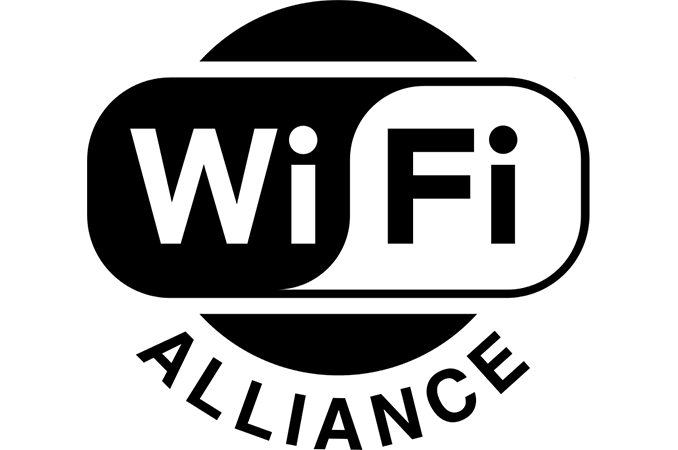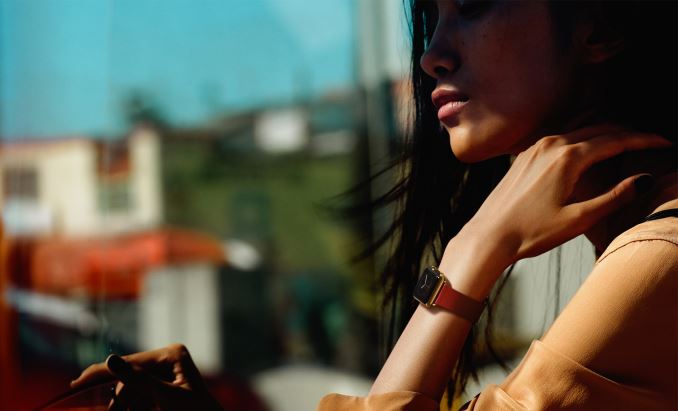Wi-Fi HaLow: Long-Range, Low-Power Wi-Fi for Internet-of-Things Devices
by Anton Shilov on January 6, 2016 1:37 AM EST
There are more than 6.8 billion devices with Wi-Fi technology in use today, but the number of devices that need to share data or access the Internet wirelessly will grow exponentially in the coming years because various wearables, driverless cars, smart sensors and other devices that belong to the Internet-of-Things (IoT) world. The Wi-Fi Alliance this week announced the IEEE 802.11ah standard, which was developed specifically for IoT devices. The tech will be formally called the Wi-Fi HaLow.
The 802.11ah operates in 900 MHz band, which helps to cut down power consumption, extend transmission range, improve propagation (the ability to transmit in the presence of many interferences) and penetration (the ability to transmit through various barriers, such as walls or floors). It is expected that the radius of a Wi-Fi HaLow device will be twice that of modern Wi-Fi standards (i.e., 500 meters in case of the 802.11n) and up to one kilometer, which can be further extended using relay. Actual data-rates supported by the 802.11ah will not be too high: the tech uses 802.11a/g spec with up to 26 channels that provide up to 100 Kb/s throughput.
The Wi-Fi HaLow technology was designed to enable communications between devices at longer distances and/or in challenging environments (with many barriers) using relatively low amounts of power. The tech could challenge both Bluetooth and cellular networks eventually since it combines the best of both worlds: low power operation as well as relatively long range. Moreover, unlike Bluetooth and other short-range radio technologies, the 802.11ah can connect devices directly to the Internet.
Since many devices supporting the Wi-Fi 802.11ah will also be able to operate in 2.4 and 5 GHz bands, they will also support traditional 802.11n/ac technologies and will be able to send and receive data at higher transfer-rates when possible.
The WiFi HaLow will unlikely replace Bluetooth completely due to the vast ecosystem that already uses the technology. However, it will compete against Bluetooth in the future. It will also not be able to replace cellular networks because they are ubiquitous.
The Wi-Fi HaLow 802.11ah technology has a lot of potential and is something that IoT needs. The 802.11ah will enable communications both for tiny battery-operated wearables as well as for various applications that cannot connect using today’s Wi-Fi technology. For example, the Wi-Fi HaLow can connect all personal health trackers at a hospital to its central servers, or enable communications between various machines at a large agriculture or industrial facility.
The Wi-Fi Alliance claims that its technologies operate in unlicensed spectrum; therefore, the Wi-Fi HaLow should not interfere with existing wireless technologies. Nonetheless, it should be noted that 900 MHz band is licensed in some countries. Therefore, the tech may not work everywhere, which will likely slowdown its adoption by the industry.
At present, the Wi-Fi 802.11ah is still a draft specification. Later this year it will be approved by the IEEE Std P802.11ah working group.
Source: Wi-Fi Alliance











18 Comments
View All Comments
Samus - Wednesday, January 6, 2016 - link
That's true. When they announced this I figured it'd be between 1-5Mbps, not 0.1Mbps.That truly limits its potential. A phone conversation is 64Kbps so it's good for little more than that when competing with Bluetooth, which is much faster albeit less range, so I don't see it competing with Bluetooth in the traditional sense Bluetooth is used now, but for things like device trackers (like TrakR) or pairing data devices to your phone (such as a smartwatch) HaLow is going to kill Bluetooth because of the range and IPv6 stack.
stephenbrooks - Wednesday, January 6, 2016 - link
It's not for "multimedia" - you'd need a form of broadband for that. But I think of it that 100kbps is over 3000 32-bit sensor readings, or 1500 words of text, or 250 lines of code, or 80 tweets, per second. So you can still do a lot with it with a well-designed protocol.WorldWithoutMadness - Thursday, January 7, 2016 - link
Well theoritical is up to 100kbps without any hitch.So if we're putting some real life sense, put latency etc2, maybe lot less than that.
IMHO, it will have a lot of resistance for smartwatch pairing adoption in urban area, unless you're fine leaving your phone 1 km away. Most city people won't do that, most people I know think their phone is like their life.
I'm actually thinking this actually wants to fill what bluetooth lacks in automated market or DIY (IoT stuffs). Example in house, automated air con, lightning, etc or in agriculture, checking soil content, barn temperature, etc. If you have ever played with raspberry or arduino for stuffs like this before, the market actually really needs AH mode as a standard, a low power wireless connection that readily connect to internet as well.
jjj - Wednesday, January 6, 2016 - link
Wifi ad is more of a threat to BT , in non IoT anyway. - guess now we have the first phone with ad, the LeTv Le Max Pro, it's time for some cool peripherals and accessories.For ah one point everybody forgets is the very high number of devices that can connect to a single access point, it's a very relevant feature and should be mentioned.
Gunbuster - Wednesday, January 6, 2016 - link
Should be fun seeing a device pull up a mile long SSID list of every router within 1 kilometer of your location...Something like:
400 Uverse and Comcast.
100 Country or top 40 song titles
50 businesses
25 like BigD69
15 like smokeupwifi420
1andrew - Saturday, January 9, 2016 - link
Haha that is a great point. The 2.4 GHz suffers from crowding and if this did ship with every router I imagine there would be a rapid increase in noise on the 900 MHz range. However, WiFi AH would work very well for me and am excited to see how it pans out.vinob - Wednesday, January 6, 2016 - link
what about India?edimer - Wednesday, January 20, 2016 - link
This is very fast and is very nice router.Here is one interesting way for Power consumption getting DOWN:https://youtu.be/YmgSnZm6YQY
But his speed not target. :-)